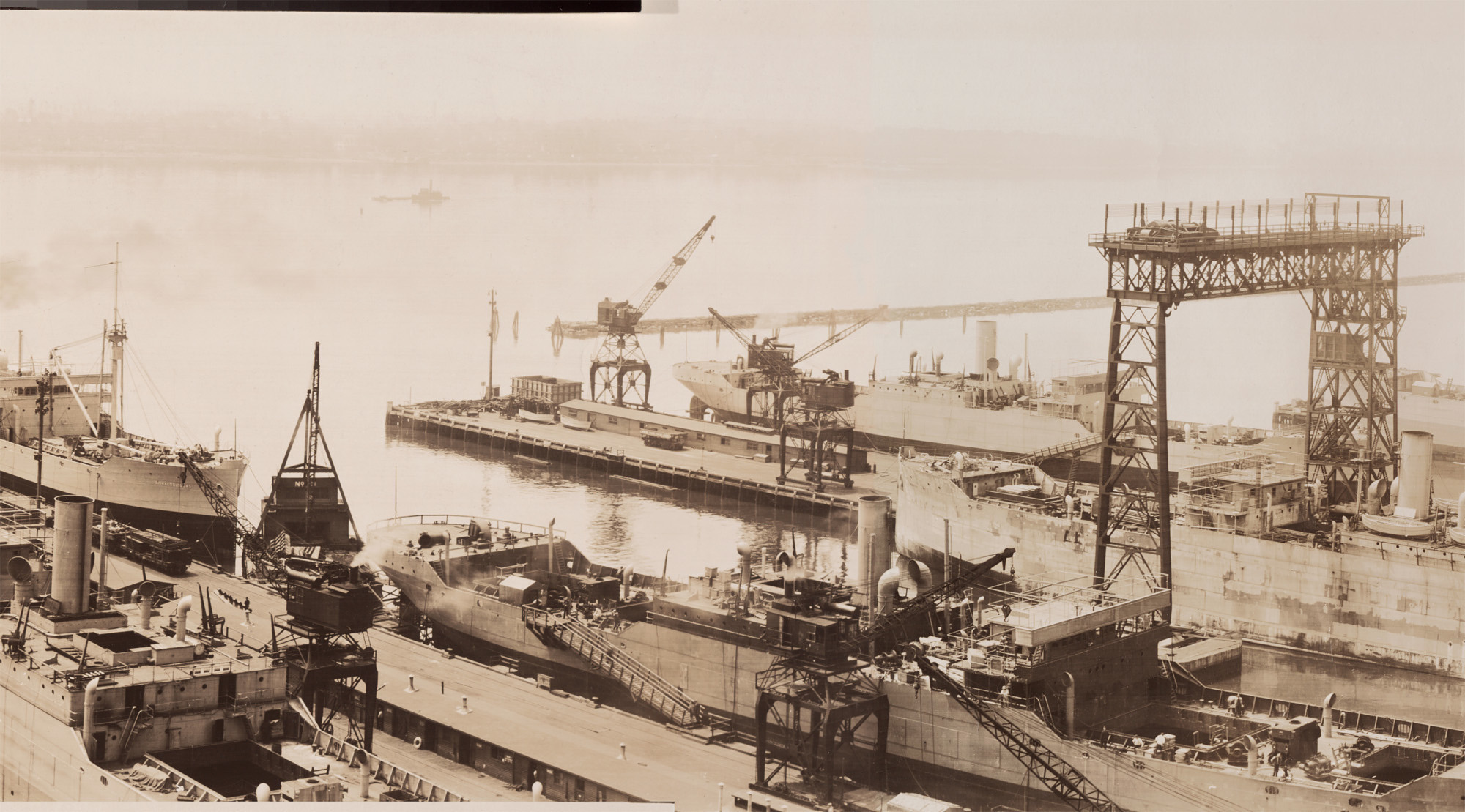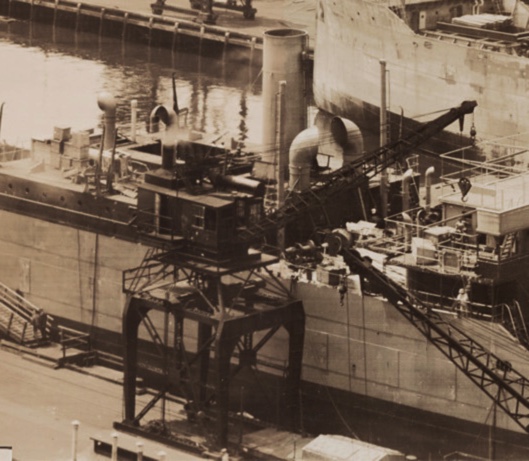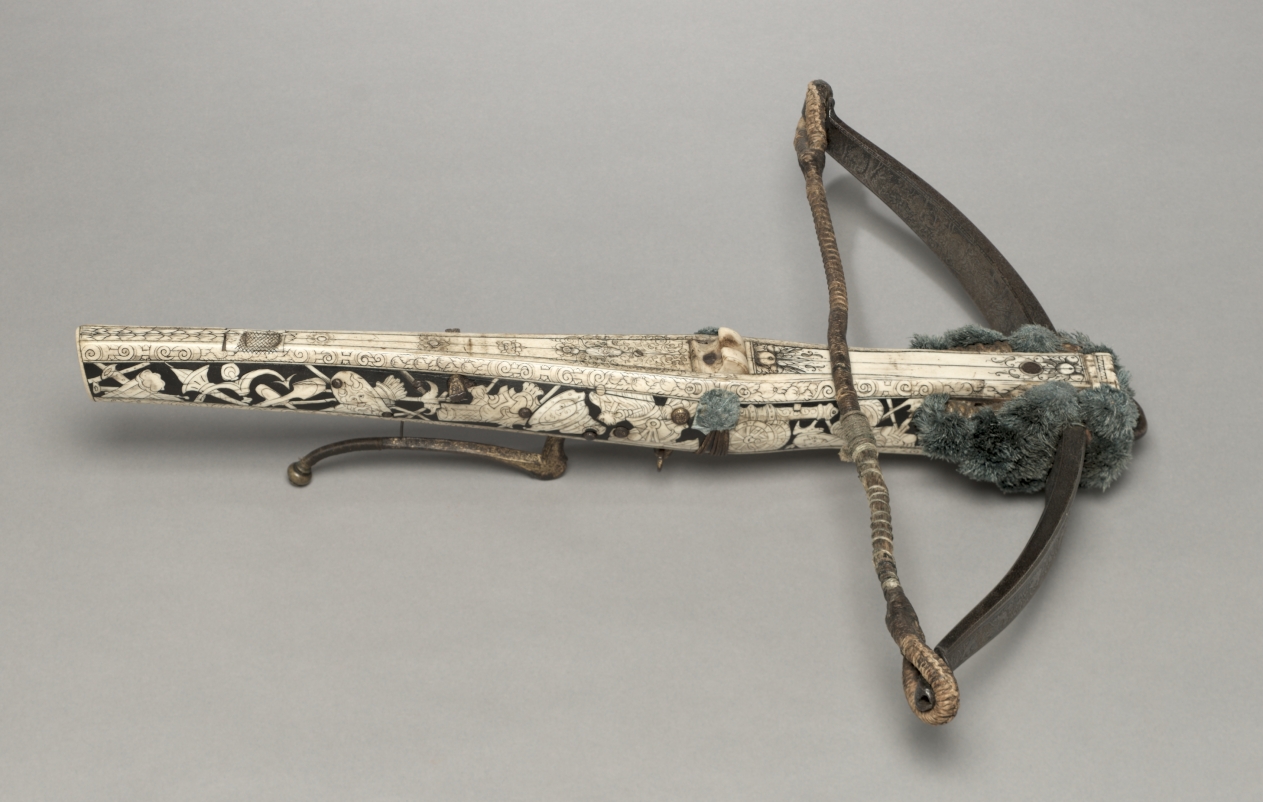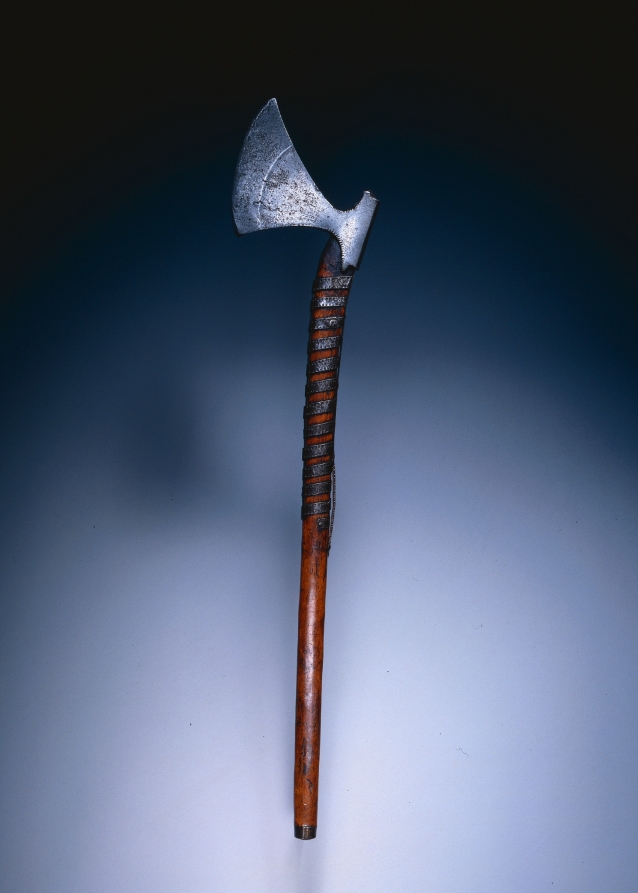
accession no. 1977.0003
Here’s a few more details on the cranes at the Marine Terminal Park. According to the National Register of Historic Places nomination form, the cranes were originally 15 ton oil burning, steam powered locomotive gantry cranes built by McMyler Interstate Company of Cleveland, Ohio in 1917. Twenty-eight of them were purchased by the new Hog Island shipyard in 1917. There is an excellent summary of Hog Island by John Lawrence on the also-excellent Encyclopedia of Greater Philadelphia

accession no. 1977.0003
The steam gantry cranes have a 15 ton capacity at 15 ft. radius, mounted on tracks, with holding and closing lines and clam shell buckets of 3/4 and 1 1/2 yard capacity. Provision is made for magnets at 35 ft. radius with portable electric power. In 1952 they were overhauled and the boilers replaced. They stand on four legs, and are approximately 40 ft. tall.
TAMS 1952


